Inducing Angiogenesis in the Nucleus Pulposus
- PMID: 37887332
- PMCID: PMC10605635
- DOI: 10.3390/cells12202488
Inducing Angiogenesis in the Nucleus Pulposus
Abstract
Bone morphogenetic protein (BMP) gene delivery to Lewis rat lumbar intervertebral discs (IVDs) drives bone formation anterior and external to the IVD, suggesting the IVD is inhospitable to osteogenesis. This study was designed to determine if IVD destruction with a proteoglycanase, and/or generating an IVD blood supply by gene delivery of an angiogenic growth factor, could render the IVD permissive to intra-discal BMP-driven osteogenesis and fusion. Surgical intra-discal delivery of naïve or gene-programmed cells (BMP2/BMP7 co-expressing or VEGF165 expressing) +/- purified chondroitinase-ABC (chABC) in all permutations was performed between lumbar 4/5 and L5/6 vertebrae, and radiographic, histology, and biomechanics endpoints were collected. Follow-up anti-sFlt Western blotting was performed. BMP and VEGF/BMP treatments had the highest stiffness, bone production and fusion. Bone was induced anterior to the IVD, and was not intra-discal from any treatment. chABC impaired BMP-driven osteogenesis, decreased histological staining for IVD proteoglycans, and made the IVD permissive to angiogenesis. A soluble fragment of VEGF Receptor-1 (sFlt) was liberated from the IVD matrix by incubation with chABC, suggesting dysregulation of the sFlt matrix attachment is a possible mechanism for the chABC-mediated IVD angiogenesis we observed. Based on these results, the IVD can be manipulated to foster vascular invasion, and by extension, possibly osteogenesis.
Keywords: angiogenesis; fusion; gene delivery; intervertebral disc; osteogenesis; proteoglycanase nucleus pulposus.
Conflict of interest statement
The authors declare no conflict of interest influencing the representation or interpretation of the reported research results.
Figures
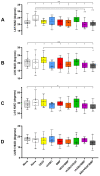

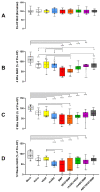

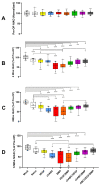



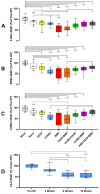




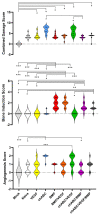


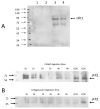
References
-
- Kuo C.C., Soliman M.A.R., Aguirre A.O., Youngs D., Kruk M., Hess R.M., Nyabuto E.M., Khan A., Jowdy P.K., Pollina J., et al. Risk factors of early complications after thoracic and lumbar spinal deformity surgery: A systematic review and meta-analysis. Eur. Spine J. 2023;32:899–913. doi: 10.1007/s00586-022-07486-3. - DOI - PubMed
-
- Smith J.S., Klineberg E., Lafage V., Shaffrey C.I., Schwab F., Lafage R., Hostin R., Mundis G.M., Jr., Errico T.J., Kim H.J., et al. Prospective multicenter assessment of perioperative and minimum 2-year postoperative complication rates associated with adult spinal deformity surgery. J. Neurosurg. Spine. 2016;25:1–14. doi: 10.3171/2015.11.SPINE151036. - DOI - PubMed
-
- Alhammoud A., Alborno Y., Baco A.M., Othman Y.A., Ogura Y., Steinhaus M., Sheha E.D., Qureshi S.A. Minimally Invasive Scoliosis Surgery Is a Feasible Option for Management of Idiopathic Scoliosis and Has Equivalent Outcomes to Open Surgery: A Meta-Analysis. Glob. Spine J. 2022;12:483–492. doi: 10.1177/2192568220988267. - DOI - PMC - PubMed
Publication types
MeSH terms
Substances
Grants and funding
LinkOut - more resources
Full Text Sources

